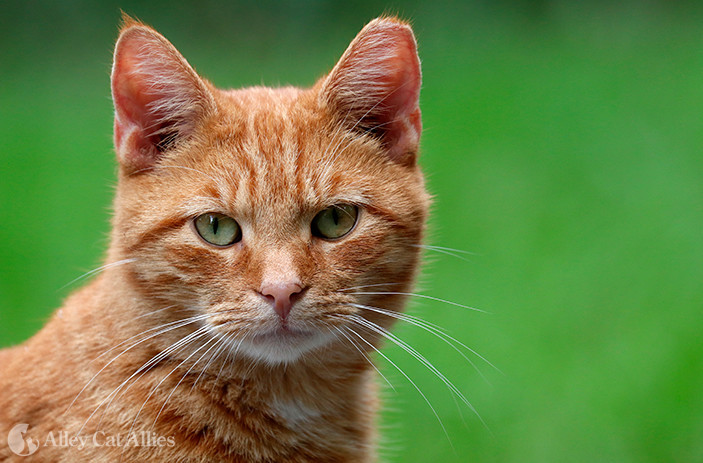 Community cats live full, healthy lives in their outdoor homes.
Community cats live full, healthy lives in their outdoor homes.
For millennia, the lives of cats have been intertwined with humanity, yet the concept of a purely indoor cat is a surprisingly recent development. In fact, less than a century ago, the vast majority of cats lived primarily outdoors. For over 10,000 years, these feline companions have roamed freely, sharing our world with birds and other wildlife. Delving into the history of cats and their relationship with humans reveals just how recently domestic cats have transitioned to indoor living, and underscores the fact that millions of cats today—often referred to as community cats—continue to thrive in outdoor environments, a testament to their biological adaptation.
Unraveling the Origins of Cats Domesticated
The unique bond between humans and cats began approximately 10,000 to 12,000 years ago in the Fertile Crescent, a region significant for the dawn of human civilization in modern West Asia. A pivotal development in this era was agriculture. As humans shifted from nomadic lifestyles to settled farming communities, the storage of grains attracted rodents, inadvertently setting the stage for feline involvement.
Drawn by this readily available food source, the Middle Eastern wildcat, scientifically known as felis silvestris lybica, began preying on these rodents. These wild ancestors of our domestic companions found an advantage in staying close to human settlements, scavenging scraps—a behavior mirrored by community cats in contemporary times. This marked the early stages of Cats Domesticated, not through human intervention, but through mutual benefit.
Over countless generations, this interaction led to the evolution of a new subspecies of cat that naturally gravitated towards human proximity: felis catus. Whether they are beloved pets, independent strays, or undomesticated feral cats (both stray and feral cats are categorized as community cats), they all belong to this same species, the domestic cat.1 This evolutionary journey underscores that cats domesticated themselves, leveraging human activity to their advantage.
Global Trotters: How Cats Domesticated Spread Across the World
The relationship between humans and cats evolved into a mutually beneficial partnership, so much so that some scientists propose cats essentially domesticated themselves.2 Their prowess as mousers made them particularly valuable on ships, leading to cats traveling alongside humans to the far corners of the globe.
- Archaeological evidence from a burial site in Cyprus provides the earliest known instance of humans and cats coexisting, dating back 9,500 years. This finding suggests cats were deliberately brought to the island by humans.3
- In ancient Egypt, cats ascended to a revered status, becoming objects of worship, mummification, and even adorned with golden jewelry to reflect their owners’ prestige.
 Community cats live full, healthy lives in their outdoor homes.
Community cats live full, healthy lives in their outdoor homes.
- When Egypt became a province of the Roman Empire in 31 BC, cats were introduced into Roman society, eventually becoming widespread throughout Europe around the 4th century AD.4 A cat skeleton from this period exhibits the shortened skull characteristic of modern domestic cats.5
- References to cats became more commonplace in literature, with Geoffrey Chaucer mentioning a cat door in The Canterbury Tales in the 1380s.
- From Europe, cats embarked on voyages to the Americas, reportedly accompanying Christopher Columbus, the settlers at Jamestown, and the passengers aboard the Mayflower.
- Cats continued their role as essential pest control throughout history, even holding official positions as employees of the United States Postal Service well into the 19th and early 20th centuries.6
- Towards the end of the 19th century, a shift occurred in American perceptions of cats, with more people embracing them as companions in addition to their practical utility. The first cat show in the United States was held at Madison Square Garden in 1895. By the conclusion of World War I, cats had become widely accepted as household pets in the U.S.
Throughout this extensive period, cats enjoyed considerable freedom to move in and out of human dwellings. Even President Calvin Coolidge’s cat had the liberty to roam to and from the White House in the 1920s. As Sam Stall, author of 100 Cats Who Changed Civilization and The Cat Owner’s Manual, notes, “Back in Coolidge’s day no one thought of confining cats indoors—not even one belonging to the president of the United States.”7 This historical perspective highlights how deeply ingrained outdoor living was for cats domesticated throughout history.
The Rise of the Indoor Cat: Catering to Feline Comfort
Confining cats indoors full-time was not feasible, nor even a desired objective, until the advent of several key 20th-century innovations: refrigeration, kitty litter, and the widespread practice of spaying and neutering.
While these advancements in modern living have made indoor cat keeping possible, biologically, cats remain fundamentally unchanged from their ancestors of thousands of years ago. Although their role in our society has broadened and evolved in the last century, their fundamental behaviors and needs remain consistent.
Revolutionizing Cat Care: Food and Hygiene
Unlike dogs, who have undergone significant physiological changes since domestication, adapting to a more omnivorous diet, cats retain their need for a high-protein diet. Prior to refrigeration and canned cat food in the 20th century, sustaining indoor cats, unable to supplement their diet through hunting, would have been challenging for most Americans, who could not afford to provide extra fresh meat or fish.8
Similarly, until the mid-20th century, cats freely roamed neighborhoods, utilizing the outdoors as their natural litter box. While some cat owners used pans filled with dirt or newspaper indoors, it wasn’t until the accidental discovery of clay litter in 1947 and the subsequent marketing of brands like Tidy Cats® in the 1960s that litter boxes gained widespread acceptance. The invention of cat litter propelled cats into unprecedented popularity as indoor pets, although their innate outdoor survival skills persist.9
Managing Feline Populations: Spaying and Neutering
Before spaying and neutering became readily available and accessible around the 1930s, keeping unsterilized cats indoors presented significant challenges, particularly during mating season. While sterilization techniques existed for livestock, finding veterinarians trained to safely neuter pets was difficult for most American households before this period.10 Just as cats historically managed their food and waste disposal outdoors, 20th-century cats reproduced and gave birth outdoors, as their predecessors had done since their origins in the Fertile Crescent 10,000 years ago.
While some offspring of these outdoor cats can be successfully socialized and integrated into human homes if introduced to human contact at a young age, many remain outdoors, living independent lives with varying degrees of human interaction. Although adult community cats—those not socialized to humans or indoor living—are generally not suited to becoming indoor pets, Trap-Neuter-Return (TNR) programs improve their lives and manage populations humanely.
Community Cats: Embracing Their Natural Habitat
In the vast timeline of human history and cats domesticated, the concept of indoor-only cats has only become commonplace in the last 60 to 70 years—a blink of an eye in evolutionary terms.
Throughout history, cats have thrived outdoors. Our recent introduction of reproductive control, coupled with innovations that cater to indoor living, has facilitated bringing cats indoors. We essentially bring the outdoors inside for them, providing canned food and litter boxes to meet biological needs developed over millennia of outdoor existence.
Although human civilization and domestic cats have co-evolved, community cat populations are not a human-created problem. Cats have inhabited outdoor environments for eons; they are not newcomers to the ecosystem, nor are they simply a result of lost pets or irresponsible pet ownership. Instead, they occupy a natural niche in the landscape.
Community cats deserve to live their lives outdoors, as they have for thousands of years. Indoor confinement is not a viable option for them, as they are not socialized to indoor living or human companionship. They would experience stress and unhappiness indoors. Their natural home is the outdoors, and like squirrels, raccoons, and birds, they are well-adapted to their outdoor environment.
Acknowledging this fundamental reality is crucial to understanding and effectively assisting these animals. TNR represents a compassionate approach that society can extend to them.
Just as many compassionate individuals provide bird feeders and shelters to support birds through harsh winters, many kind people feed community cats and construct outdoor shelters for them.
Through TNR, we further aid cats by spaying and neutering them and providing vaccinations.
This approach benefits not only the cats but also effectively addresses concerns within human communities where community cats reside. People generally oppose inhumane solutions like cat roundups and euthanasia. They seek stabilization of cat populations and often appreciate the reduction of nuisance behaviors associated with unsterilized cats. TNR represents sound public policy; it is a thoughtful, balanced strategy for enhancing coexistence between outdoor cats and humans in our shared environment. This is why numerous cities are adopting TNR programs. TNR stabilizes cat populations, significantly reduces cat-related complaints to municipalities, lowers euthanasia rates in shelters, and saves taxpayer money.
Founded in 1990, Alley Cat Allies stands as a leading advocacy organization for cats, dedicated to transforming communities to protect and improve the lives of all cats and kittens. With over 1.5 million supporters, they strive for a world where cats are valued and every community implements humane and effective programs and policies to safeguard them.
Through fearless advocacy, compassionate care, education and outreach, and law and policy activism, they empower and mobilize citizens, advocates, grassroots groups, shelters, veterinary professionals, and elected officials across the United States and worldwide to enhance their communities for cats through non-lethal, evidence-based methods.
Visit their website at www.alleycat.org and connect with them on social media: Facebook, X (Twitter), Instagram, LinkedIn and YouTube. Charlene Pedrolie is the President and Chief Operating Officer of Alley Cat Allies.
References
[1] O’Brien, S. J., & Johnson, W. E. (2007). The evolution of cats. Scientific American, 297(1), 68-75.
[2] Driscoll, C. A., Macdonald, D. W., & O’Brien, S. J. (2009). From wild animals to domestic pets, an evolutionary view of domestication. Proceedings of the National Academy of Sciences, 106(Supplement 1), 9971-9978.
[3] Vigne, J. D., Guilaine, J., Debue, K., Haye, L., & Gérard, P. (2004). Early taming of the cat in Cyprus. Science, 304(5668), 259-259.
[4] Ottoni, C., Van Neer, W., De Cupere, B., Daligault, J., Guinet, M., Herzig, K. H., … & Peters, J. (2017). The palaeogenetics of cat dispersal in the Old World. Nature Ecology & Evolution, 1(7), 1-8.
[5] Randi, E., Pierpaoli, M., & Beaumont, M. (2001). Genetic analysis of wildcat (Felis silvestris) and domestic cat (Felis catus) hybridization in Italy. Molecular Ecology, 10(10), 2585-2598.
[6] U.S. Postal Service Archives. (n.d.). Postal Service cats.
[7] Stall, S. (2007). The cat owner’s manual: operating instructions, trouble-shooting tips, and maintenance schedules. Quirk Books.
[8] Plantinga, E. A., Bosch, G., & Hendriks, W. H. (2011). Estimation of the dietary protein requirement of adult domestic cats. The Journal of nutrition, 141(6), 1053-1064.
[9] Edwards, P. (2006). Purrfectly potty trained: cat litter box solutions. Paul Edwards.
[10] Landsberg, G. M., Hunthausen, W., & Ackerman, L. (2012). Handbook of behavior problems of the dog and cat. Elsevier Health Sciences.


